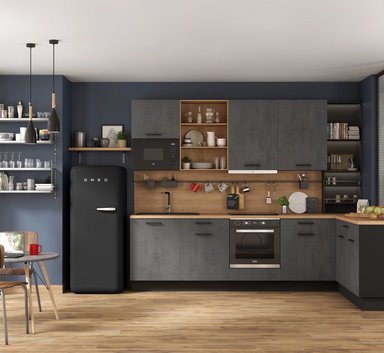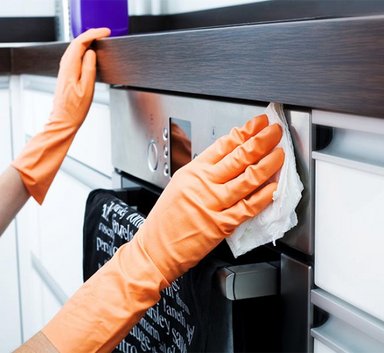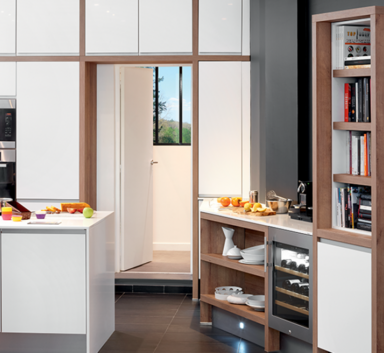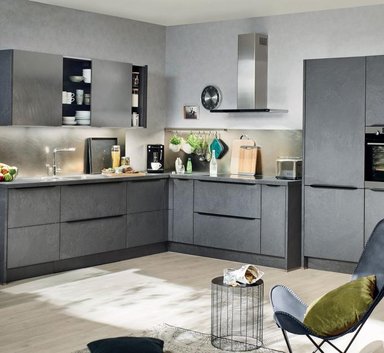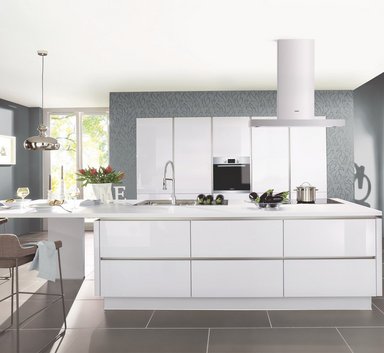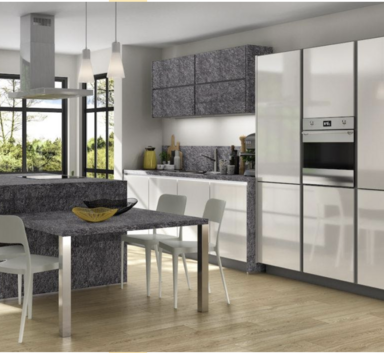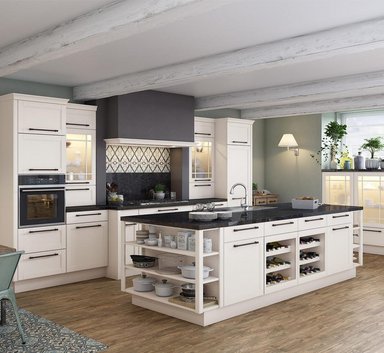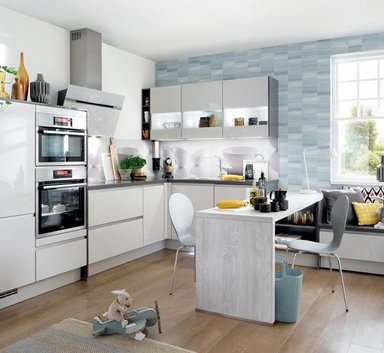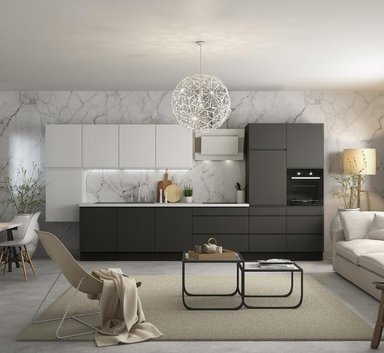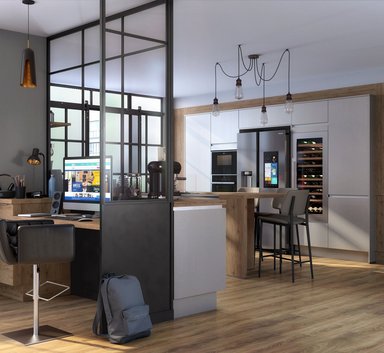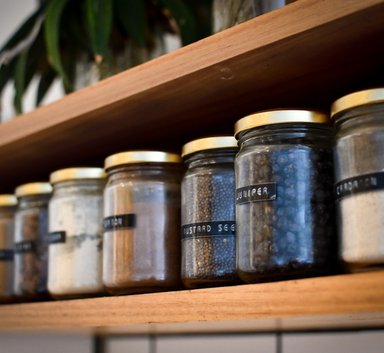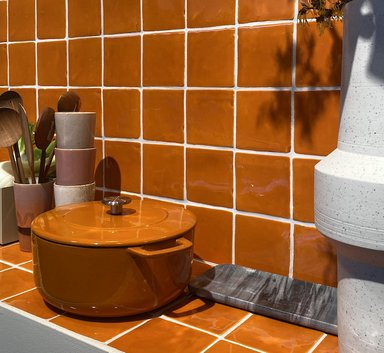![[Translate to English:] plan, travail, cuisine](/fileadmin/_processed_/4/1/csm_DELIA_Gris_pierre_Zoom_A1_2019_49c9edeca3.jpeg)
Ergonomics: the thickness depends on your height
There are standard thicknesses for worktops (10mm, 12mm, 14mm, 16mm, 21mm, 29mm, 38mm and 58mm, 98mm). At ixina, we offer more than 10, ranging from 10mm to 98mm. But luckily it is also possible to have bespoke dimensions to suit you, depending on the materials. These vary from “slim” (12.5mm to 16mm) to “XXL” (up to 100mm). The thicker the worktop, the higher your base unit will be.
For maximum comfort and ergonomics, the total height (base unit + worktop) should be adapted to your size. Ideally, it should be level with your belt. If your worktop is too high, you will have to raise your arms to cut your vegetables, which will eventually lead to tension in your shoulders. Too low and you will need to bend down, leading to back pain and a tense neck!
Which is why it is so important to properly adapt the total height of your units to your size. You can achieve this by adjusting the thickness of your worktop. There’s nothing to stop you combining different worktop thicknesses to suit your needs in the kitchen: slimmer by the hob to have a better overview, thicker in the preparation and washing zone to improve your posture.
![[Translate to English:] esthétique, cuisine](/fileadmin/_processed_/6/a/csm_matiere_pi_clara_nobilia_ambiance_cuisine_bois_Sommerset_887_769400adf3.jpeg)
Aesthetics: it contributes to the look of your kitchen
Style is in the detail – and the thickness of your worktop is a style element in your kitchen. As a general rule, a dense and solid worktop is impressive and gives character and personality to your design. Slimmer and more discreet worktops add a touch of lightness and elegance to a modern interior.
It also depends on the material chosen. Some are naturally thick, like solid wood (3cm to 4cm). This thickness and imposing presence help to create a charming, high-quality and authentic kitchen.
Granite, a natural rock that comes in a wide variety of colours and finishes, is popular in modern and contemporary kitchens and most commonly used in a thickness of 2cm. But it is quite possible to have a 3cm version or even up to 6cm – a strong aesthetic choice that helps to reinforce the material’s robust and solid character.
For a slimmer finish, you will need to consider materials such as laminate, compact laminate (10mm), quartz, glass or ceramic. These worktops blend discreetly into kitchens with a sleek, designer, ultra-contemporary design. Dekton is an interesting sintered stone material that looks identical to granite but is available in thicknesses of 0.8cm, 1.2cm or 2cm.
![[Translate to English:] cuisine, plan, travail](/fileadmin/_processed_/4/e/csm_Ceramique_lechner_plan_de_travail_675_63f729e001.jpeg)
Technical: it adapts to other elements
Hob, sink, cabinets... You will need to make sure that your worktop thickness is consistent with the other elements of your kitchen. Too thin and you may have difficulty inserting your hob, for example, especially if you have a drawer just below. A good compromise would be a 3.8cm worktop that allows you to install the majority of the appliances you need.




![1032616958 [Translate to English:] plan, travail, épaisseur](/fileadmin/_processed_/5/d/csm_GettyImages-1032616958_Lifestyle_humain_Catalogue_2020_tif_famille_cuisine_ilot_travail_conversation_de87c750a2.jpg)
